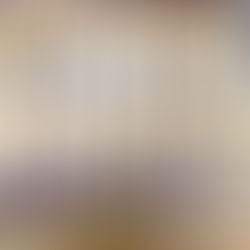Shibori Pleated Pants

If you love shibori like I do, you will be interested in reading about my latest project. I decided to undertake a different kind of project, namely, shibori pants.
The cover picture shows the silk freshly wound on a pole.
The contrast in color from wet to dry is pretty dramatic. The piece of silk was 6 2/3' in length to begin with, and I have never dyed a piece of silk that large before. It did not turn out uniform in color, although I am delighted with how well it did turn out. I feel that when shibori pleating is applied, the highlights will enhance the fabric. Let me show you the many colors that can be seen, depending upon the lighting. The silk, still wet in some areas, has been laid in a heap on my work table.

I was quite startled at first, when I saw the heap sitting there on the table! But after ironing the entire silk piece dry, it actually looked quite appealing. I had already found a pants pattern that I liked and could design from. I deleted the side zipper, deleted the waistband, added length, and most importantly, slashed and spread my muslin pattern 5" or a little more to accommodate the pleating. Originally thinking that I would insert panels in the pants, I quickly realized the added complexity of doing that. So slashing and spreading was a great alternative to adding width to the pants but still keeping the number of silk pieces to a minimum. The next action I took was to lay out enough fabric to get a pair of pants cut out.
The following is a picture of the pants pattern I drafted in muslin.

This is showing how the muslin pattern was changed and widened by slashing and spreading it several inches. Both the fronts and the backs have been equally treated. As a temporary measure, I have now taped the pieces of muslin together until a later time when I will make them more permanent, or cut out new muslins.

It happened that I cut out an extra front and back pants piece, because of color issues. Using it to my advantage, I was able to experiment with pleating on them.
I used my usual string, and thought it looked ok, but I wanted the pleating to be even finer if I could manage that.
In the next picture, the pipe is laying on the table, having been quickly wound with a silk pants back piece, and then quickly wound with silk thread all the way to the bottom of the pants piece. The spacing is close together, not to tight, and the result was dramatically good, considering how quickly it went together. Usually, great attention has to be put on how tightly or loosly the fabric is wound on the pipe, as well as how tightly the string is wound around the silk. After winding a few inches of string on the pipe, the silk usually needs to be scrunched, or it gets too tight on the pipe and too difficult to handle. On this piece, not much attention was put on those kinds of details, since it was a quick experiment anyways.

As you can see, I wound the entire piece with white silk thread very closely, and then scrunched it all at once! It came out very impressively uniformly pleated, with enough variation to keep it interesting. So far, the prospects for a beautiful pair of shibori pants is looking good. More to follow!!







